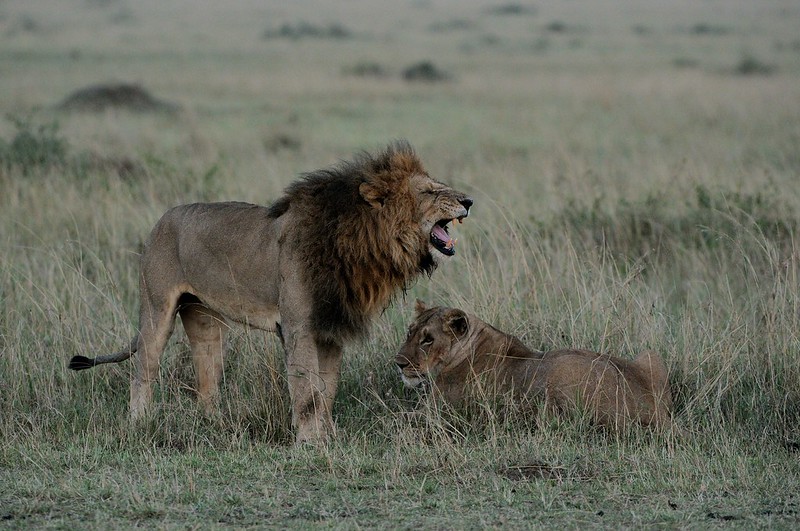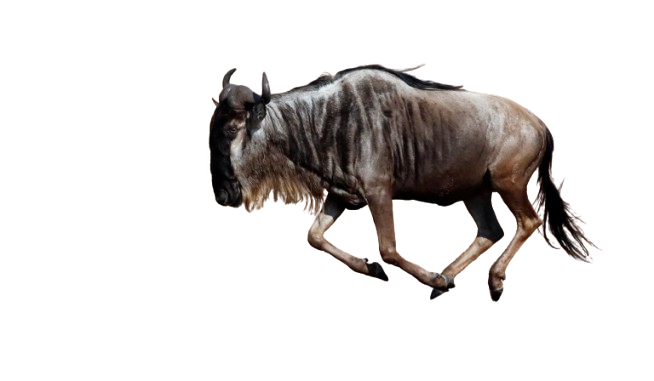Animals in Serengeti National Park
In northern Tanzania, lies Serengeti, a 14,763-square-kilometer national park where wildlife thrives forever. It’s one of the oldest ecosystems and hosts the Great Migration, Big Five, and countless animals in its diverse habitats. The name has its roots in the Maa language of the Maasai. After they watched the plains stretching farther than they could, they called it “Siringit,” which means endless plains. Here’s what you need to know about the animals of Serengeti National Park.
Predators
Speaking of predators, the Serengeti rarely disappoints safari-goers, as it hosts the largest population of predators. If you want to spot the big cats, you’ve come to the right place. The lions that made Serengeti to be declared a game reserve in 1929 still thrive here, alongside leopards and cheetahs spying the kopje in the savannah plains.
Estimates put the population of lions, leopards, and cheetahs at 4,000, 1,000, and 550, respectively. Big cats are spread across the entire park, but their concentration is much higher in the central Serengeti. And for good reason, the Seronera is known as the big cat capital of the world. Not only that, hyena population is approximately 7,500 individuals. You can still find other small predators, such as black-backed jackals, bat-eared foxes, serval cats, civet, and wild cat. This park is home to about 250 wild dogs. The population of these successful hunters is improving following efforts to restore them from a severe disease wipeout in 1992
The predator population in Serengeti is large for a reason.
- Firstly, the park is home to a large population of prey, from small antelopes like dik-diks to large game like buffalo. So, predators, no matter how small they are, have their prey.
- Secondly, the park’s grassland ecosystem feeds many herbivores. Just a few days of disease and hunger.
- Lastly, its diverse habitats consist of sparse woodlands and open grasslands support predator-prey interactions as compared to Asian thick, impenetrable forests.
Big Five
The first thing many safari-goers want to see in Africa is the Big Five animals. That’s a lion, leopard, elephant, buffalo, and rhino. If you’re one of them, relax, Serengeti has them all for you. Though the name may sound ‘big,’ it has nothing to do with their size.
Tourism adopted it from the old-school hunters who used to hunt on foot. Of the many animals they attempted to kill, these five were dangerous. And if a hunter missed his target, the next day was supposed to be his funeral, because the animals turned into real killers when their survival instinct was triggered by a bullet.
One of the best places to search for the Big Five is in the Seronera Valley in the central Serengeti. However, it’s not that easy. Here’s our guide:
· Lion
The Serengeti is the world’s largest holder of lions. As we mentioned earlier, it’s 4,000 lions from 300 lion prides, each with clear and distinct territory. They’re the apex predators of the park, with their favorite prey being antelopes, wildebeest, and zebra.
Lions often lounge on the kopjes of Seronera, where they find shade and vantage points for hunting. Lions are also present in other regions of the park, including Lobo and Kogatende in the north, Kusini Plains and Ndutu in the south, and in the western corridor.
· Leopard
If you spot a leopard draped over a branch of acacia or sausage tree on your afternoon drive, consider yourself lucky. Why? Because they are the hardest ones to spot due to their elusiveness. They would come out late evening to hunt. Once succeed, they drag their kill up a tree to avoid hyenas and lions.
· Elephant
Elephants, the largest terrestrial animal on earth, roam the Seronera’s woodlands and riverbanks. The chances of seeing them are also great in the Lobo Valley in the north. Their unique feature is their matriarch-led herds, which have up to 100 individuals.
· Buffalo
Approximately 50,000 buffalo call the Serengeti home, spreading across many habitats. The buffalo has earned its unique nickname as the “Black Death.” They look so polite, but hear what our guides have to tell you: “Don’t let their calm grazing fool you – buffalo remember everything, forgive nothing, and when they charge, even lions think twice.”
· Black rhino
Elusive in nature, but you stand a great chance of spotting them in the Moru Kopje. The Seronera Valley Back also has a few rhinos. Always keep an eye out for shrubs since they prefer browsing leaves in shrubland.
Back in the 1950s and early 1960s, the Serengeti had rhinos in abundance. Due to poaching, rhinos, specifically the black rhino, are currently critically endangered. But with ongoing conservation efforts, we are confident their population will probably go up, probably like in their heyday 6 decades ago.
Herbivores
As mentioned, the ecosystem of Serengeti supports herbivores. The open grasslands, riverine forests, acacia woodlands, and valleys harbor a large population of grazers and browsers. The most common herbivores are wildebeest, Thomson’s and Grant’s gazelles, and zebras. Their approximate population are 1.7 million, 500,000, and 200,000, respectively. These plains animals are migratory, and together, they participate in the Great Migration, which can include up to 2 million animals.
The woodlands are home to elephants, impalas, buffalo, dik-diks, giraffes, and waterbuck. Other herbivores include hartebeests, oribis, warthogs, duikers, roan antelopes, bushbucks, and reed bucks.
Other animals
Serengeti hosts crocodiles, hippos, black-and-white colobus monkeys, mongooses, and many river birds. In the Mara River, the Nile crocodiles hunt for wildebeest, making the river crossings even more spectacular.
Creeping creatures like pythons exist in the Serengeti. Small and difficult to notice are insects, including butterflies, dung beetles, butterflies, and ants. A walking safari is the best way to view these minute creatures.
In Serengeti, you can still see surprises. Sometimes, an unexpected animal pops up as you drive near its hideout. It’s a place where wildlife viewing is guaranteed. Want to start a plan or ask more questions? Give us a call.
Frequently Asked Questions
Will I see the Big Five in the Serengeti?
Absolutely, but with a little patience and luck. Lions, elephants, and buffalo are easier to spot. Leopards are more elusive, so keep your eyes on the trees! Black rhinos are rare and usually found near Moru Kopjes. Our guides know the best spots and will do everything they can to help you tick them all off your list.
Are there tigers in the Serengeti?
No, not in Africa. Tigers live in Asian thick forests, India, and Russia, not in the Serengeti.
Are there wild dogs in the Serengeti?
Yes, but spotting them is a special treat. African wild dogs are making a slow but hopeful comeback in the Serengeti. Now, they’re about 250, that’s a fair number.

